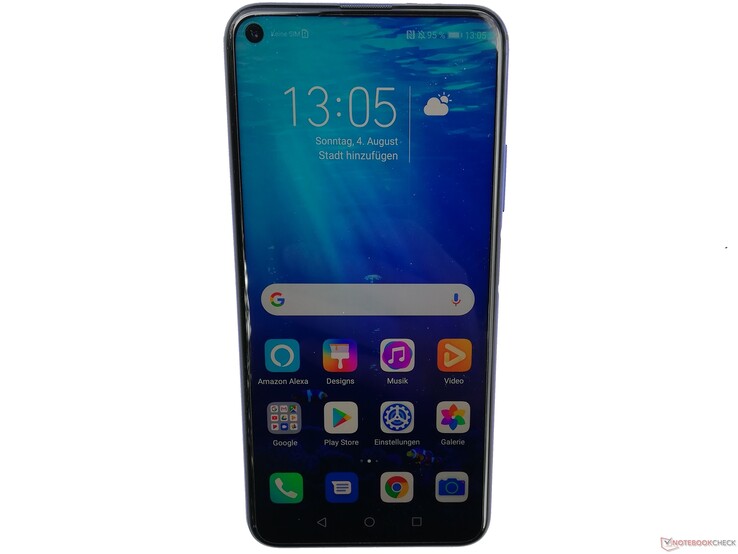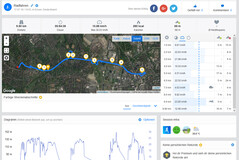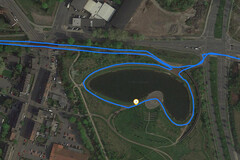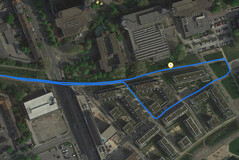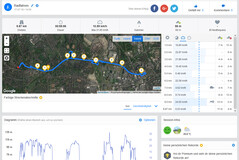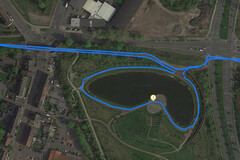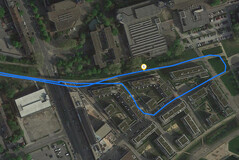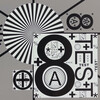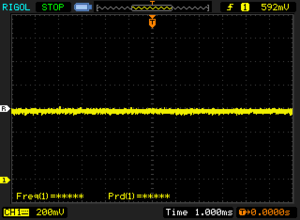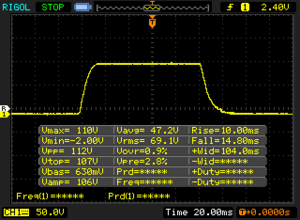Breve Análise do Smartphone Honor 20: uma câmera quádrupla em um smartphone de gama média
Os Top 10
» Os Top 10 Portáteis Multimídia
» Os Top 10 Portáteis de Jogos
» Os Top 10 Portáteis Leves para Jogos
» Os Top 10 Portáteis Acessíveis de Escritório/Empresariais
» Os Top 10 Portáteis Premium de Escritório/Empresariais
» Os Top 10 dos Portáteis Workstation
» Os Top 10 Subportáteis
» Os Top 10 Ultrabooks
» Os Top 10 Conversíveis
» Os Top 10 Tablets
» Os Top 10 Smartphones
» A melhores Telas de Portáteis Analisadas Pela Notebookcheck
» Top 10 dos portáteis abaixo dos 500 Euros da Notebookcheck
» Top 10 dos Portáteis abaixo dos 300 Euros
| Networking | |
| iperf3 transmit AX12 | |
| Google Pixel 3a XL | |
| Asus ZenFone 6 ZS630KL | |
| Xiaomi Mi 9T Pro | |
| Honor 20 | |
| Honor 20 Pro | |
| Honor 10 | |
| iperf3 receive AX12 | |
| Google Pixel 3a XL | |
| Asus ZenFone 6 ZS630KL | |
| Xiaomi Mi 9T Pro | |
| Honor 20 | |
| Honor 20 Pro | |
| Honor 10 | |
| |||||||||||||||||||||||||
iluminação: 95 %
iluminação com acumulador: 491 cd/m²
Contraste: 875:1 (Preto: 0.55 cd/m²)
ΔE ColorChecker Calman: 1.1 | ∀{0.5-29.43 Ø4.78}
ΔE Greyscale Calman: 1.3 | ∀{0.09-98 Ø5}
98.6% sRGB (Calman 2D)
Gamma: 2.12
CCT: 6442 K
| Honor 20 IPS, 2340x1080, 6.3" | Honor 20 Pro IPS, 2340x1080, 6.3" | Honor 10 IPS, 2280x1080, 5.8" | Xiaomi Mi 9T Pro AMOLED, 2340x1080, 6.4" | Asus ZenFone 6 ZS630KL IPS, 2340x1080, 6.4" | Google Pixel 3a XL OLED, 2160x1080, 6" | |
|---|---|---|---|---|---|---|
| Screen | -119% | -47% | -33% | -66% | -12% | |
| Brightness middle (cd/m²) | 481 | 514 7% | 555 15% | 594 23% | 569 18% | 409 -15% |
| Brightness (cd/m²) | 481 | 495 3% | 537 12% | 607 26% | 537 12% | 410 -15% |
| Brightness Distribution (%) | 95 | 92 -3% | 94 -1% | 91 -4% | 79 -17% | 96 1% |
| Black Level * (cd/m²) | 0.55 | 0.5 9% | 0.39 29% | 0.31 44% | ||
| Contrast (:1) | 875 | 1028 17% | 1423 63% | 1835 110% | ||
| Colorchecker dE 2000 * | 1.1 | 5.1 -364% | 2.3 -109% | 1.51 -37% | 3.5 -218% | 1.3 -18% |
| Colorchecker dE 2000 max. * | 2.1 | 7.8 -271% | 6 -186% | 4.27 -103% | 6 -186% | 2.3 -10% |
| Greyscale dE 2000 * | 1.3 | 5.8 -346% | 3.9 -200% | 2.6 -100% | 5.1 -292% | 1.5 -15% |
| Gamma | 2.12 104% | 2.3 96% | 2.19 100% | 2.219 99% | 2.36 93% | 2.22 99% |
| CCT | 6442 101% | 8142 80% | 6212 105% | 6390 102% | 6827 95% | 6621 98% |
* ... menor é melhor
Cintilação da tela / PWM (modulação por largura de pulso)
| Tela tremeluzindo / PWM não detectado | |||
[pwm_comparison] Em comparação: 53 % de todos os dispositivos testados não usam PWM para escurecer a tela. Se PWM foi detectado, uma média de 8142 (mínimo: 5 - máximo: 343500) Hz foi medida. | |||
Exibir tempos de resposta
| ↔ Tempo de resposta preto para branco | ||
|---|---|---|
| 24.8 ms ... ascensão ↗ e queda ↘ combinadas | ↗ 10 ms ascensão | |
| ↘ 14.8 ms queda | ||
| A tela mostra boas taxas de resposta em nossos testes, mas pode ser muito lenta para jogadores competitivos. Em comparação, todos os dispositivos testados variam de 0.1 (mínimo) a 240 (máximo) ms. » 57 % de todos os dispositivos são melhores. Isso significa que o tempo de resposta medido é pior que a média de todos os dispositivos testados (20.2 ms). | ||
| ↔ Tempo de resposta 50% cinza a 80% cinza | ||
| 46 ms ... ascensão ↗ e queda ↘ combinadas | ↗ 20.8 ms ascensão | |
| ↘ 25.2 ms queda | ||
| A tela mostra taxas de resposta lentas em nossos testes e será insatisfatória para os jogadores. Em comparação, todos os dispositivos testados variam de 0.165 (mínimo) a 636 (máximo) ms. » 78 % de todos os dispositivos são melhores. Isso significa que o tempo de resposta medido é pior que a média de todos os dispositivos testados (31.7 ms). | ||
| PCMark for Android | |
| Work performance score (classificar por valor) | |
| Honor 20 | |
| Honor 20 Pro | |
| Honor 10 | |
| Xiaomi Mi 9T Pro | |
| Asus ZenFone 6 ZS630KL | |
| Google Pixel 3a XL | |
| Média HiSilicon Kirin 980 (9728 - 13531, n=10) | |
| Work 2.0 performance score (classificar por valor) | |
| Honor 20 | |
| Honor 20 Pro | |
| Honor 10 | |
| Xiaomi Mi 9T Pro | |
| Asus ZenFone 6 ZS630KL | |
| Google Pixel 3a XL | |
| Média HiSilicon Kirin 980 (7567 - 9326, n=10) | |
| AnTuTu v7 - Total Score (classificar por valor) | |
| Honor 20 | |
| Honor 20 Pro | |
| Honor 10 | |
| Xiaomi Mi 9T Pro | |
| Asus ZenFone 6 ZS630KL | |
| Google Pixel 3a XL | |
| Média HiSilicon Kirin 980 (268359 - 322616, n=10) | |
| Jetstream 2 - 2.0 Total Score | |
| Média da turma Smartphone (23.8 - 387, n=154, últimos 2 anos) | |
| Asus ZenFone 6 ZS630KL (Chrome 75) | |
| Xiaomi Mi 9T Pro (Chrome 75) | |
| Média HiSilicon Kirin 980 (48.4 - 60.9, n=6) | |
| Honor 20 Pro (Chrome 75) | |
| Honor 20 (Chrome 75) | |
| Google Pixel 3a XL (Chrome 73) | |
| Honor 10 (Chrome 74) | |
| Speedometer 2.0 - Result 2.0 | |
| Média da turma Smartphone (15.2 - 643, n=130, últimos 2 anos) | |
| Asus ZenFone 6 ZS630KL (Chrome 75) | |
| Média HiSilicon Kirin 980 (58.3 - 67.8, n=6) | |
| Honor 20 Pro (Chome 75) | |
| Honor 20 (Chrome 75) | |
| Xiaomi Mi 9T Pro (Chrome 75) | |
| Google Pixel 3a XL (Chrome 73) | |
| Honor 10 (Chrome 74) | |
| WebXPRT 3 - Overall | |
| Média da turma Smartphone (38 - 380, n=38, últimos 2 anos) | |
| Asus ZenFone 6 ZS630KL (Chrome 75) | |
| Xiaomi Mi 9T Pro (Chrome 75) | |
| Média HiSilicon Kirin 980 (86 - 124, n=10) | |
| Honor 20 Pro (Chrome 75) | |
| Honor 20 (Chrome 75) | |
| Honor 10 (Chrome 66) | |
| Google Pixel 3a XL (Chrome 73) | |
| Octane V2 - Total Score | |
| Média da turma Smartphone (2228 - 121337, n=202, últimos 2 anos) | |
| Asus ZenFone 6 ZS630KL (Chrome 75) | |
| Média HiSilicon Kirin 980 (20618 - 23285, n=10) | |
| Honor 20 (Chrome 75) | |
| Honor 20 Pro (Chrome 75) | |
| Xiaomi Mi 9T Pro (Chrome 75) | |
| Google Pixel 3a XL (Chrome 73) | |
| Honor 10 (Chrome 66) | |
| Mozilla Kraken 1.1 - Total | |
| Honor 10 (Chrome 66) | |
| Google Pixel 3a XL (Chrome 73) | |
| Honor 20 (Chrome 75) | |
| Honor 20 Pro (Chrome 75) | |
| Xiaomi Mi 9T Pro (Chrome 75) | |
| Média HiSilicon Kirin 980 (1948 - 3098, n=10) | |
| Asus ZenFone 6 ZS630KL (Chrome 75) | |
| Média da turma Smartphone (257 - 28190, n=157, últimos 2 anos) | |
* ... menor é melhor
| Honor 20 | Honor 20 Pro | Honor 10 | Xiaomi Mi 9T Pro | Asus ZenFone 6 ZS630KL | Google Pixel 3a XL | Média 128 GB UFS 2.1 Flash | Média da turma Smartphone | |
|---|---|---|---|---|---|---|---|---|
| AndroBench 3-5 | 10% | -1% | -4% | 0% | -39% | 6% | 302% | |
| Sequential Read 256KB (MB/s) | 829 | 843 2% | 828 0% | 809 -2% | 831 0% | 315.6 -62% | 761 ? -8% | 2232 ? 169% |
| Sequential Write 256KB (MB/s) | 196.4 | 247.3 26% | 192.1 -2% | 196.9 0% | 195.6 0% | 179.1 -9% | 296 ? 51% | 1842 ? 838% |
| Random Read 4KB (MB/s) | 156.7 | 173.6 11% | 145.9 -7% | 142.5 -9% | 153.3 -2% | 92.1 -41% | 154 ? -2% | 295 ? 88% |
| Random Write 4KB (MB/s) | 157 | 160.4 2% | 163 4% | 148.5 -5% | 160.2 2% | 87 -45% | 130.4 ? -17% | 335 ? 113% |
(+) A temperatura máxima no lado superior é 34.9 °C / 95 F, em comparação com a média de 35.2 °C / 95 F , variando de 21.9 a 247 °C para a classe Smartphone.
(+) A parte inferior aquece até um máximo de 34.1 °C / 93 F, em comparação com a média de 34 °C / 93 F
(+) Em uso inativo, a temperatura média para o lado superior é 28.9 °C / 84 F, em comparação com a média do dispositivo de 32.9 °C / ### class_avg_f### F.
Honor 20 análise de áudio
(±) | o volume do alto-falante é médio, mas bom (###valor### dB)
Graves 100 - 315Hz
(-) | quase nenhum baixo - em média 20.8% menor que a mediana
(±) | a linearidade dos graves é média (12.9% delta para a frequência anterior)
Médios 400 - 2.000 Hz
(+) | médios equilibrados - apenas 4.3% longe da mediana
(+) | médios são lineares (4.2% delta para frequência anterior)
Altos 2 - 16 kHz
(±) | máximos mais altos - em média 5.5% maior que a mediana
(+) | os máximos são lineares (5% delta da frequência anterior)
Geral 100 - 16.000 Hz
(±) | a linearidade do som geral é média (22.3% diferença em relação à mediana)
Comparado com a mesma classe
» 46% de todos os dispositivos testados nesta classe foram melhores, 7% semelhantes, 47% piores
» O melhor teve um delta de 11%, a média foi 35%, o pior foi 134%
Comparado com todos os dispositivos testados
» 64% de todos os dispositivos testados foram melhores, 6% semelhantes, 30% piores
» O melhor teve um delta de 4%, a média foi 24%, o pior foi 134%
Google Pixel 3a XL análise de áudio
(+) | os alto-falantes podem tocar relativamente alto (###valor### dB)
Graves 100 - 315Hz
(-) | quase nenhum baixo - em média 20.2% menor que a mediana
(±) | a linearidade dos graves é média (11.3% delta para a frequência anterior)
Médios 400 - 2.000 Hz
(+) | médios equilibrados - apenas 3.7% longe da mediana
(+) | médios são lineares (4.3% delta para frequência anterior)
Altos 2 - 16 kHz
(+) | agudos equilibrados - apenas 4.2% longe da mediana
(±) | a linearidade dos máximos é média (8% delta para frequência anterior)
Geral 100 - 16.000 Hz
(±) | a linearidade do som geral é média (16.5% diferença em relação à mediana)
Comparado com a mesma classe
» 7% de todos os dispositivos testados nesta classe foram melhores, 5% semelhantes, 88% piores
» O melhor teve um delta de 11%, a média foi 35%, o pior foi 134%
Comparado com todos os dispositivos testados
» 27% de todos os dispositivos testados foram melhores, 6% semelhantes, 67% piores
» O melhor teve um delta de 4%, a média foi 24%, o pior foi 134%
| desligado | |
| Ocioso | |
| Carga |
|
Key:
min: | |
| Honor 20 3750 mAh | Honor 20 Pro 4000 mAh | Honor 10 3400 mAh | Xiaomi Mi 9T Pro 4000 mAh | Asus ZenFone 6 ZS630KL 5000 mAh | Google Pixel 3a XL 3700 mAh | Média HiSilicon Kirin 980 | Média da turma Smartphone | |
|---|---|---|---|---|---|---|---|---|
| Power Consumption | 3% | -10% | 12% | -7% | 30% | 0% | -9% | |
| Idle Minimum * (Watt) | 0.88 | 0.9 -2% | 1.12 -27% | 0.7 20% | 0.81 8% | 0.7 20% | 0.802 ? 9% | 0.849 ? 4% |
| Idle Average * (Watt) | 2.27 | 1.4 38% | 2.26 -0% | 1 56% | 2.35 -4% | 1.63 28% | 2.07 ? 9% | 1.43 ? 37% |
| Idle Maximum * (Watt) | 2.34 | 2.6 -11% | 2.3 2% | 1.3 44% | 2.37 -1% | 1.67 29% | 2.38 ? -2% | 1.616 ? 31% |
| Load Average * (Watt) | 4.81 | 5 -4% | 5.14 -7% | 5.2 -8% | 5.33 -11% | 2.64 45% | 4.87 ? -1% | 7.06 ? -47% |
| Load Maximum * (Watt) | 6.63 | 6.9 -4% | 7.89 -19% | 10 -51% | 8.55 -29% | 4.62 30% | 7.46 ? -13% | 11.2 ? -69% |
* ... menor é melhor
| Honor 20 3750 mAh | Honor 20 Pro 4000 mAh | Honor 10 3400 mAh | Xiaomi Mi 9T Pro 4000 mAh | Asus ZenFone 6 ZS630KL 5000 mAh | Google Pixel 3a XL 3700 mAh | |
|---|---|---|---|---|---|---|
| Duração da bateria | 43% | 2% | 35% | 109% | 37% | |
| Reader / Idle (h) | 21 | 33.8 61% | 19.4 -8% | 29.5 40% | 35.2 68% | 30.4 45% |
| H.264 (h) | 10.1 | 15.2 50% | 11 9% | 16.5 63% | 35.6 252% | 16 58% |
| WiFi v1.3 (h) | 10.9 | 13.3 22% | 11.1 2% | 12.7 17% | 13.4 23% | 11.8 8% |
| Load (h) | 3.5 | 4.8 37% | 3.6 3% | 4.2 20% | 6.8 94% | 4.8 37% |
Pro
Contra
Veredicto - Muito espaço de armazenamento e uma boa câmera
O Honor 20 prova ser um smartphone impressionantemente completo. Está disponível por pouco menos de US$ 500 e oferece boa qualidade de câmera, muito espaço armazenamento interno e desempenho suficiente para uso diário e aplicativos mais exigentes. O desempenho do dispositivo pode ser aprimorado ativando seu modo de alto desempenho, embora isso cause impacto na duração da bateria. Isso é muito bom com quase 11 horas e pode facilmente acompanhar sua concorrência.
O Honor 20 pontua bem com a sua boa câmera e a decente duração da bateria. Os usuários terão que se virar sem um cartão microSD.
Não encontramos muito a criticar sobre o Honor 20: Seu design de furos é uma questão de gosto e alguns usuários podem não apreciar o sensor de digitais colocado ao lado. É uma pena que a Honor não tenha incluído um leitor de cartões microSD, particularmente porque o slot dualSIM poderia ter sido facilmente transformado em um slot híbrido.
Honor 20
- 08/19/2019 v6 (old)
Mike Wobker




